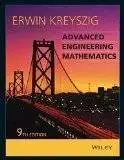No products in the cart.
Return To Shop
Menu
Categories
- Physics Books
- UPTU & AKTU Books
- Dictionaries / Language Learning
- Yoga
- Beauty and Fitness
- Text and Reference Books
- Biology Books
- Computer Science Books
- Personality Development
- Meditation
- Ayurveda / Homeopathy / Herbal Cure
- Used or Second Hand Books
- Accounting
- Children Books
- Family and Relationships
- Health & Fitness
- Crafts and Hobbies
- Mechanical Engineering Books
- Biotechnology Books
- Delhi University Books
- General
- Parenting
- Games & Quizzes
- Electrical Engineering Books
- Food Technology
- Management Books
- Biographies
- Nutrition
- Jokes - Humour
- Mathematics Books
- Hindi Books
- Best Deals: Top Selling Books
- Academic Book
- Law Books
- Class-11th Books
- Chemistry Books
- New Arrivals
- Electronics Telecom
- Class- 9th books
- Civil Engineering Books
- Medical Books
- School Books
- Environmental Engineering Books
- Electronics Communication Books
- Class- 10th class
- Free Online e-Books
- Class 12 th Books
- NCERT
- Motivational
- English Novel
- Astrology / Palmistry / Vastu / Hypnotism etc
- Competitive Examinations
- Engineering Books
- Electrical and Electronics Engineering (EEE)
- Encyclopedia
- Gift Items
- Cookery
- Economics
- Amity University ASET Books
- Alternative Therapy
- Spiritual Books
- Stress Management
You may be interested in…
Sale 29%
Advanced Engineering Mathematics 9th Edition By Erwin Kreyszig | Buy To Save Upto 30%
Sale 38%
Analog Integrated Electronics by Sanjay Sharma
CMOS DIGITAL INTEGRATED CIRCUITS ANALYSIS DESIGN By Sung-Mo Kang And Yusuf Leblebici | Pustakkosh.com
₹1,099.00 Original price was: ₹1,099.00.₹550.00Current price is: ₹550.00.
Backorder means you can still order but the product's availability might have to be double checked with warehouses as there are other pending orders. We will ship it to you subsequently.
1 in stock (can be backordered)
CMOS DIGITAL INTEGRATED CIRCUITS ANALYSIS DESIGN Sung-Mo Kang and Yusuf Leblebici
Book Condition : Used Good
is a crucial resource for anyone interested in CMOS circuit design and analysis. This book covers the principles and applications of CMOS technology, providing a balanced mix of theory and practical design techniques.
It starts with the basics, explaining how MOSFETs function and how they are used to construct logic gates and other digital circuits.
Sung-Mo Kang and Yusuf Leblebici dive into advanced topics such as performance optimization, power-area tradeoffs, and the challenges of working with modern sub-micron CMOS processes.
They discuss how to design circuits that are fast, efficient, and robust, and how to mitigate issues like noise and signal integrity. The authors also focus on the challenges posed by scaling CMOS circuits to smaller process nodes, addressing problems like leakage current and process variations.
Through numerous examples and exercises, CMOS Digital Integrated Circuits Analysis and Design provides a hands-on approach to learning, making it suitable for both students and practicing engineers.
The book’s clear explanations and thorough coverage of both theoretical and practical aspects of CMOS design make it a key reference for anyone working with digital integrated circuits.
Overall, CMOS DIGITAL INTEGRATED CIRCUITS ANALYSIS DESIGN Sung-Mo Kang and Yusuf Leblebici is an essential text for understanding the design and analysis of CMOS circuits. Its comprehensive coverage and practical insights make it an invaluable resource for students, engineers, and professionals in the field of CMOS technology.
You may also like...
Sale 32%
Analog Digital Electronics for UPTU IV-EEEEE-2013 course by A.P.Godse U.A.Bakshi
Sale 38%
Fundamentals Of Electric Circuits By Charles K. Alexander and Matthew N. O. Sadiku
CMOS DIGITAL INTEGRATED CIRCUITS ANALYSIS DESIGN Sung-Mo Kang and Yusuf Leblebici
Book Condition : Used Like New
ISBN : 9780070530775
is a comprehensive textbook that explores the fundamental principles of CMOS (Complementary Metal-Oxide-Semiconductor) digital integrated circuits. This book is ideal for students, engineers, and professionals involved in the design and analysis of CMOS circuits.
It delves into the essential concepts of circuit design, such as logic gates, transistor-level design, and performance optimization, all while providing a solid foundation
in the underlying semiconductor physics. The authors blend theoretical principles with practical applications, offering detailed explanations on how CMOS circuits operate at both the individual transistor level and as part of larger integrated systems.
The book covers a wide range of topics crucial for understanding modern CMOS technologies, starting from basic circuit elements to more complex systems. It introduces essential concepts like the MOSFET (Metal-Oxide-Semiconductor Field-Effect Transistor) and its role in circuit operation.
Sung-Mo Kang and Yusuf Leblebici present the process of designing logic circuits using CMOS technology, explaining the trade-offs between speed, power consumption, and area (known as the power-area tradeoff). Detailed analysis methods are incorporated, allowing readers to understand the impact of each parameter on circuit performance.
Throughout the book, the authors provide numerous examples, including simulation results, to illustrate how the theory is applied in practical circuit designs. These examples are complemented by exercises that help reinforce the understanding of CMOS design principles.
The book also includes discussions on advanced topics such as noise, signal integrity, and the scaling of CMOS circuits to smaller geometries, which is crucial for modern integrated circuit design.
Another significant feature of CMOS Digital Integrated Circuits Analysis and Design is its coverage of the latest trends in CMOS technology, including sub-micron and deep-submicron processes.
The book highlights the challenges of working with these advanced technologies, such as increased leakage current and the impact of process variations. This makes the book highly relevant for those interested in cutting-edge CMOS applications.
The authors have structured the book to be accessible to both beginners and advanced readers. It begins with introductory material, building up to more complex subjects.
The text is rich in both analytical techniques and practical design methods, making it a valuable resource for both academic courses and professional reference. For readers who wish to deepen their understanding of the subject, the book also includes numerous references to research papers and additional reading materials.
In conclusion,CMOS DIGITAL INTEGRATED CIRCUITS ANALYSIS DESIGN Sung-Mo Kang and Yusuf Leblebici is an authoritative guide for anyone looking to understand and work with CMOS digital integrated circuits.
Whether you are a student learning the fundamentals or an engineer working on cutting-edge technologies, this book provides the knowledge and tools necessary to succeed in the field.
| Weight | 1.2 kg |
|---|
Related products
Professional Communication by Dr. Prachi Dr. S. K. Singh
Analog Integrated Electronics by Sanjay Sharma
Digital Signal Processing For UPTU Paperback By Sanjay Sharma (Author)| Pustakkosh.com
Communication Systems Analog and Digital Paperback By Sanjay Sharma | Pustakkosh.com
Fundamentals of Electronic Devices By J.B. Gupta
Fundamentals of Communication Engineering by Sanjay Sharma
VLSI TECHNOLOGY By Simon Sze P...
₹1,299.00 Original price was: ₹1,299.00.₹645.00Current price is: ₹645.00.


DIGITAL SIGNAL PROCESSING Seco...
₹585.00 Original price was: ₹585.00.₹310.00Current price is: ₹310.00.
More
More











